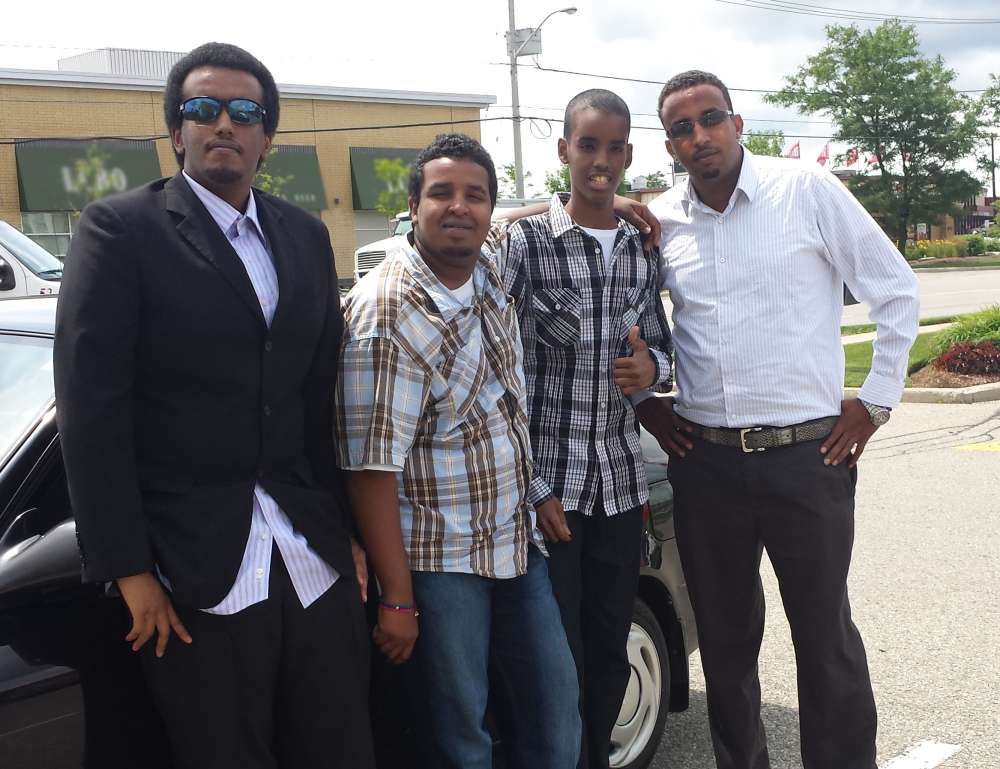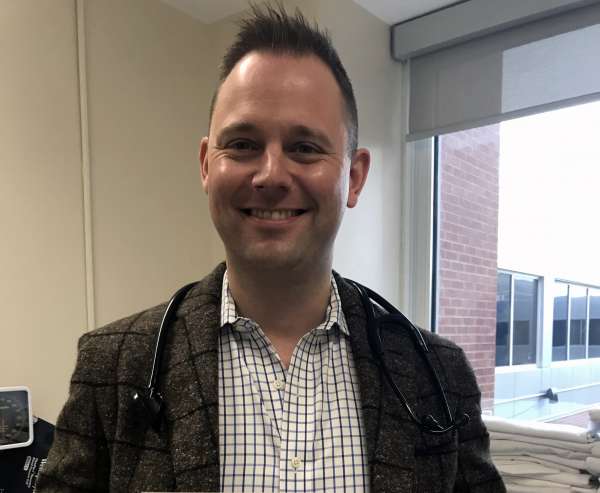It was the middle of the night in February 2021 when 29 year-old Abdullahi knew something was very wrong. Sick with a cough, headache and fever from previously diagnosed COVID, he began experiencing numbness in his left hand and arm. By the time he woke the next morning, the numbness had spread to the left side of his body.
“I knew what was happening when I woke up,” says Abdullahi. “I have read about heart attacks and strokes. I had trouble sleeping that night and I knew something was wrong when I woke up in the morning. I tried to stand up but I just fell over which woke my brother. I tried to tell him to call the ambulance, but it was really hard to speak.”

When the ambulance arrived, paramedics recognized the signs of a stroke and called the hospital to let staff know that a stroke patient was on the way. In potential stroke cases like this, the hospital initiates a “Code Stroke” which signals staff from the lab, emergency room and medical imaging’s CT scan to be ready and waiting to provide immediate assistance when the patient arrives for quick diagnosis and care. Time is brain; which means the sooner the right interventions happen, the better chance stroke patients have for a good outcome, and fewer long-term deficits following their stroke.
Dr. Giilck was the stroke physician on call that met Abdullahi in the emergency department.
“Abdullahi was experiencing weakness and numbness on his left side and difficulty with his speech,” says Dr. Giilck. “We know that strokes do happen to young people, and with COVID we are seeing an increased risk for stroke likely due to blood clotting and inflammation affecting vessels. Approximately 1.5% of hospitalized COVID patients suffer a stroke.”
“I remember when we arrived, the staff quickly took my blood samples and tested the movement on my left side,” says Abdullahi. “They confirmed pretty quickly it was a stroke, caused by a blood clot.”
Abdullahi was taken for urgent imaging which confirmed his stroke.
For Abdullahi’s condition, there were a few treatment options. The team started him on a blood thinner to prevent any worsening of the clot.

Abdullahi, who – aside from having COVID-19 - had no stroke risk factors and no family history of stroke, received immediate care and stayed in the hospital for approximately two weeks where he received ongoing care and physical therapy.
“I am feeling pretty good today,” says Abdullahi. “My left side still feels a bit weird and I still have issues with a couple of fingers on my left hand but I do physiotherapy at home, and it is helping. I have recovered a lot of my normal function. My advice to anyone else would be: know the signs of stroke and call 9-1-1 right away. If it can happen to me, it can happen to anyone.”
The best way to protect yourself from a COVID related stroke is to get vaccinated.


